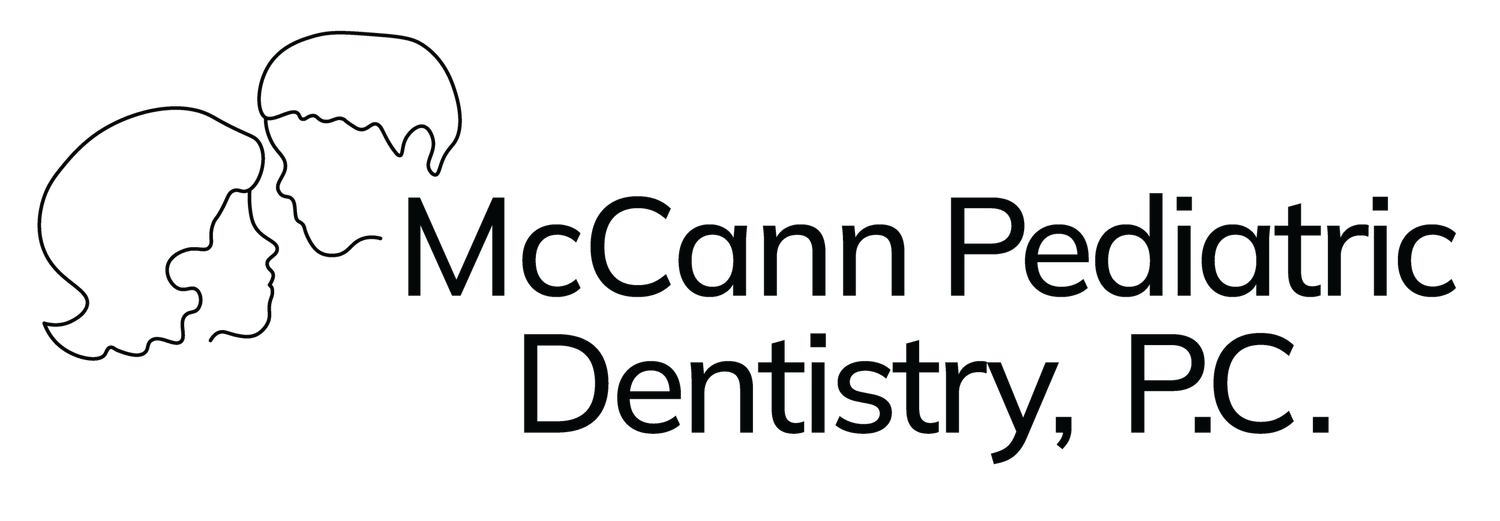All About Braces: Braces & Orthodontics
Orthodontics Overview
Orthodontics is a specialized branch of dentistry focused on aligning teeth and jaws to improve facial balance, oral health, and your child’s smile.
Proper alignment is more than cosmetic — it supports healthy function, easier cleaning, and long-term confidence. Orthodontic care can:
Guide permanent teeth into proper positions
Encourage balanced jaw growth and alignment
Preserve or create space for erupting teeth
Improve speech and chewing function
Protect protruding teeth from injury
Reduce the risk of jaw strain or discomfort
Shorten treatment time for later orthodontics
An orthodontic problem is called a malocclusion (“bad bite”). Common causes include crowded or missing teeth, misaligned jaws, oral habits like thumb-sucking, or early tooth loss. While many issues are inherited, others can develop over time.
Treatment is most common for children between ages 9 and 14, but patients of almost any age can benefit. Early evaluations can sometimes prevent more complex treatment later on.
What Are Braces and Why Are They Used?
Braces (and other orthodontic appliances) are used by orthodontic specialists to correct crowded, crooked, or misaligned teeth, or jaws that don’t meet properly.
A healthy bite and properly aligned teeth are important — not just for a confident smile, but for better chewing, speaking, and oral hygiene.
If alignment problems go untreated, they can lead to:
Tooth decay, gum disease, or premature tooth loss
Abnormal wear on tooth enamel
Jaw pain or headaches
Difficulty cleaning teeth properly
Who Needs Braces — and When?
Early Evaluation:
The American Association of Orthodontists recommends that children have their first orthodontic evaluation by age 7.
Early visits help identify jaw growth issues, habits (like thumb-sucking or mouth-breathing), and developing crowding problems.
When Treatment Usually Begins:
Most children begin treatment around ages 9–14, once most permanent teeth have erupted.
Adults can also benefit from braces — healthy teeth can be moved at almost any age.
Why Sooner May Be Better:
Early detection allows orthodontists to guide jaw and tooth development.
In some cases, orthodontists may recommend early, limited treatment (Phase 1) to prevent bigger issues later on.
Types of Braces and Current Trends
Common Options:
Traditional Metal Braces – Durable and effective for a wide range of needs.
Ceramic (Clear) Braces – Blend with the natural tooth color for a more discreet look.
Lingual Braces – Placed on the back of the teeth, hidden from view.
Self-Ligating Braces – Use specialized clips instead of elastic ties, allowing for fewer appointments and increased comfort.
2025 Trend - Metal Braces Make a Comeback:
Metal braces are becoming popular again (especially among teens) as social media has made them a fun, customizable part of self-expression. While clear aligners remain popular, braces are still the best option for complex cases or younger patients who need reliable results.
Braces vs. Clear Aligners
Both braces and aligners can effectively straighten teeth — but they work differently.
Braces: Fixed appliances that stay on the teeth and correct even complex bite issues.
Clear Aligners: Removable trays ideal for mild to moderate alignment problems.
Require consistent wear (20–22 hours/day).
Not suitable for every case.
Ask your orthodontist:
How complex is my child’s case?
What treatment option best fits our lifestyle and goals?
How long will treatment take?
What are the costs and payment options?
What to Expect During Treatment
Consultation & Diagnosis
Your orthodontist will review your child’s medical and dental history, take X-rays, photos, and digital scans to create a custom treatment plan.Active Treatment Phase
Braces or appliances are placed and adjusted every 4–6 weeks.
The total treatment time varies but typically lasts 12–24 months, depending on the case.Retention Phase
After braces are removed, your child will wear a retainer to keep teeth in their new position. Retainers are often worn full-time at first, then at night to maintain results.
Comfort and Care
Modern orthodontics uses gentle, steady pressure to move teeth, which is much more comfortable than in years past. It’s normal to feel slight soreness for a few days after adjustments, but it’s temporary. Eating soft foods and using orthodontic wax can help relieve irritation.
Eating and Hygiene Tips
Good oral hygiene keeps treatment on track and prevents staining or damage.
Avoid foods that can damage braces:
Sticky sweets (caramel, taffy, gummy candy)
Hard snacks (popcorn, nuts, ice, hard candy)
Chewy or crunchy foods (corn on the cob, uncut apples, tough bread)
Helpful habits:
Brush after every meal with a soft toothbrush and fluoride toothpaste.
Floss daily using a floss threader or orthodontic flosser.
Rinse thoroughly and check for food around brackets or wires.
Visit your dentist for professional cleanings every six months.
Space Maintainers: Protecting Growing Smiles
If a baby tooth is lost early from decay or injury, nearby teeth can shift into that space — making it hard for the permanent tooth to come in properly.
Space maintainers keep that gap open until the permanent tooth erupts.
They may look like a small band or wire, and are removed once the new tooth comes in — helping prevent future crowding and misalignment.
Why Choose Us?
We know that choosing an orthodontic office is a big decision. Here’s why families trust us with their smiles:
Payment plan options to fit your budget
Local, family-owned practice that treats you like one of our own
Routine dental care and orthodontic treatments all in one convenient location
Friendly, child-focused staff that makes every visit comfortable and fun
Whether your child is just beginning orthodontic care or needs ongoing adjustments, our team is here to make every step simple, supportive, and rewarding.
